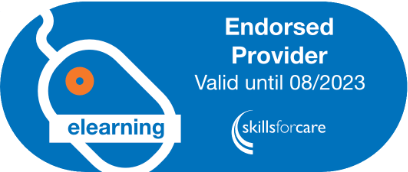01206 805359
Mon - Fri, 9am - 5pm



This course is part one online part of this regulated qualification. You will need to complete the practical part in order to receive the award.
This course includes the latest CPR and Coronavirus recommendations.
This accredited qualification provides theoretical and practical training in First Aid techniques that are specific to infants aged 0 to 1, and children aged from 1 year old to 18 years old. Learners will become familiar with the role of the paediatric first aider and be able to assess and react appropriately to an emergency situation, such as a child or an infant who is unresponsive, has an airway obstruction or is suffering from shock.
Topics also included are wounds, fractures, dislocations, injuries to the head, neck, back, eyes, ears or nose, poisoning, bites or stings and electric shock.
This qualification consists of two units and is provided over a period of 2 days with a minimum contact time of 6 hours per unit.
The Statutory Framework for the Early Years Foundation Stage is a document published by The Department for Children, Schools and Families and applies to Early Years childcare within England, Wales and Northern Ireland. The Statutory Framework states that ‘at least one person who has a current paediatric first aid certificate must be on the premises at all times when children are present. There must be at least one person on outings who has a current paediatric first aid certificate.’ The TQUK Level 3 Award in Paediatric First Aid (RQF) is recognised as a qualification that fulfils this need.
To comply with current requirements in the childcare sector, you must take this qualification again after three years. This must be taken as the two days again, there is no shorter course if you have taken the course before.
All successful students will be issued with a Paediatric First Aid Certificate detailing their achievements. The childcare sector dictates, that to be valid when working in the childcare sector, learners must retake the Paediatric First Aid qualification before the expiry of 3 years from the date that the original qualification was achieved. Please contact ProTrainings for further information
All our first aid courses fully meet the UK and European Resuscitation Council Guidelines 2021 as per the HSE requirements.
Please be advised that the classroom course has a minimum age requirement of 14.
This course can be completed as the online part 1 of a 2-part blended course. After completing this online course, you may find and attend the classroom-only part 2 course and cut down on the number of days spent in the classroom.
This course gives learners the opportunity to gain a formally recognised regulated qualification. If you require funding, a regulated qualification is often required. Phone us and we can advise if needed. If you choose our course leading to a regulated qualification, there are additional assessment criteria to be undertaken with an instructor and a small extra certification charge.
| Course Title: | TQUK Level 3 Award in Paediatric First Aid (RQF) |
|---|---|
| QAN: | 601/2885/9 |
| Level: | 3 |
| Credit Value: | 3 |
| TQT: | 22 |
This course comes with 8.0 hrs (24.0 class) of CPD, although the time to complete the course online may be less than this. Total course time includes 5 hours and 34 minutes of video training as well as knowledge reviews, final test, remedial help and reviewing downloaded material.
The content of this and all our courses has been independently certified as conforming to universally accepted Continuous Professional Development (CPD) guidelines and come with a Certified CPD Statement as well as a ProTrainings Certificate and for online courses an Evidence Based Learning statement.
Course Aims and Learning Outcomes:
Unit 1: Emergency Paediatric First Aid
1. Understand the role and responsibilities of the paediatric first aider
2. Be able to assess an emergency situation safely
3. Be able to provide first aid for an infant and a child who are unresponsive
4. Be able to provide first aid for an infant and a child who are choking
5. Be able to provide first aid to an infant or a child with external bleeding
6. Know how to provide first aid to an infant or a child who is suffering from shock
7. Know how to provide first aid to an infant or a child with bites, stings and minor injuries
Unit 2: Managing paediatric illness, injuries and emergencies
1. Be able to administer first aid to an infant or a child with suspected injuries to bones, muscles and joints
2. Be able to provide first aid to an infant or a child with suspected head and spinal injuries
3. Know how to provide first aid to an infant or a child with conditions affecting the eyes, ears and nose
4. Know how to provide first aid to an infant or a child with an acute medical condition or sudden illness.
5. Know how to provide first aid to an infant and a child who is experiencing extremes of body temperature.
6. Know how to provide first aid to an infant or a child who has sustained an electric shock
7. Know how to administer first aid to an infant or a child with burns or scalds
8. Know how to administer first aid to an infant or a child with suspected poisoning
9. Be able to provide first aid to an infant or child with anaphylaxis
“Very informative and great videos ”
“The course was set out really well, I enjoyed listening and taking in lots of information along with little tests after most modules as well.”